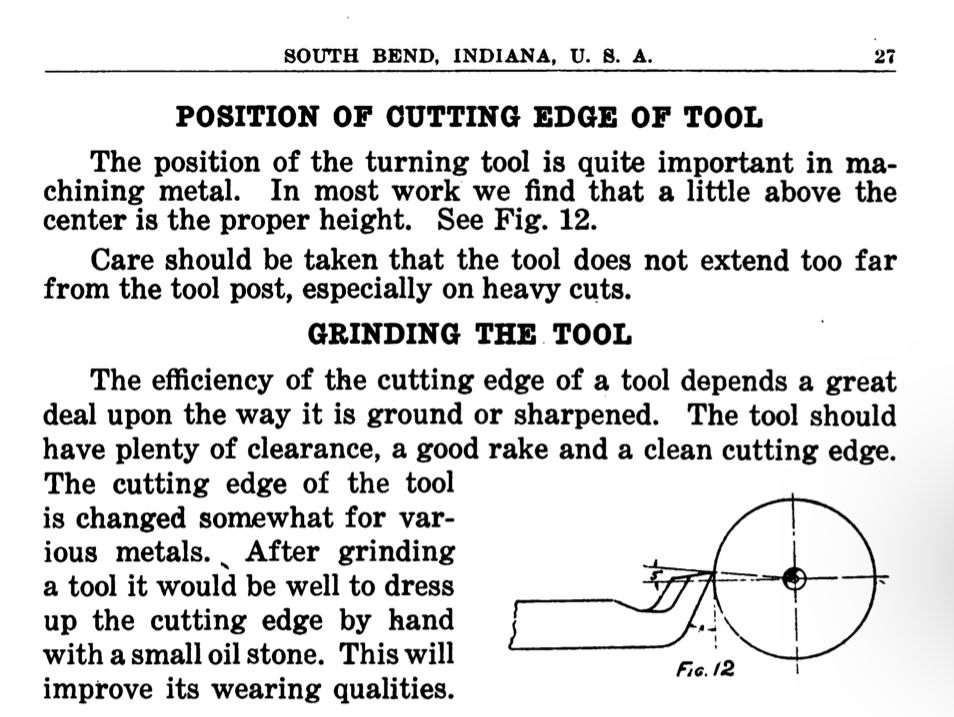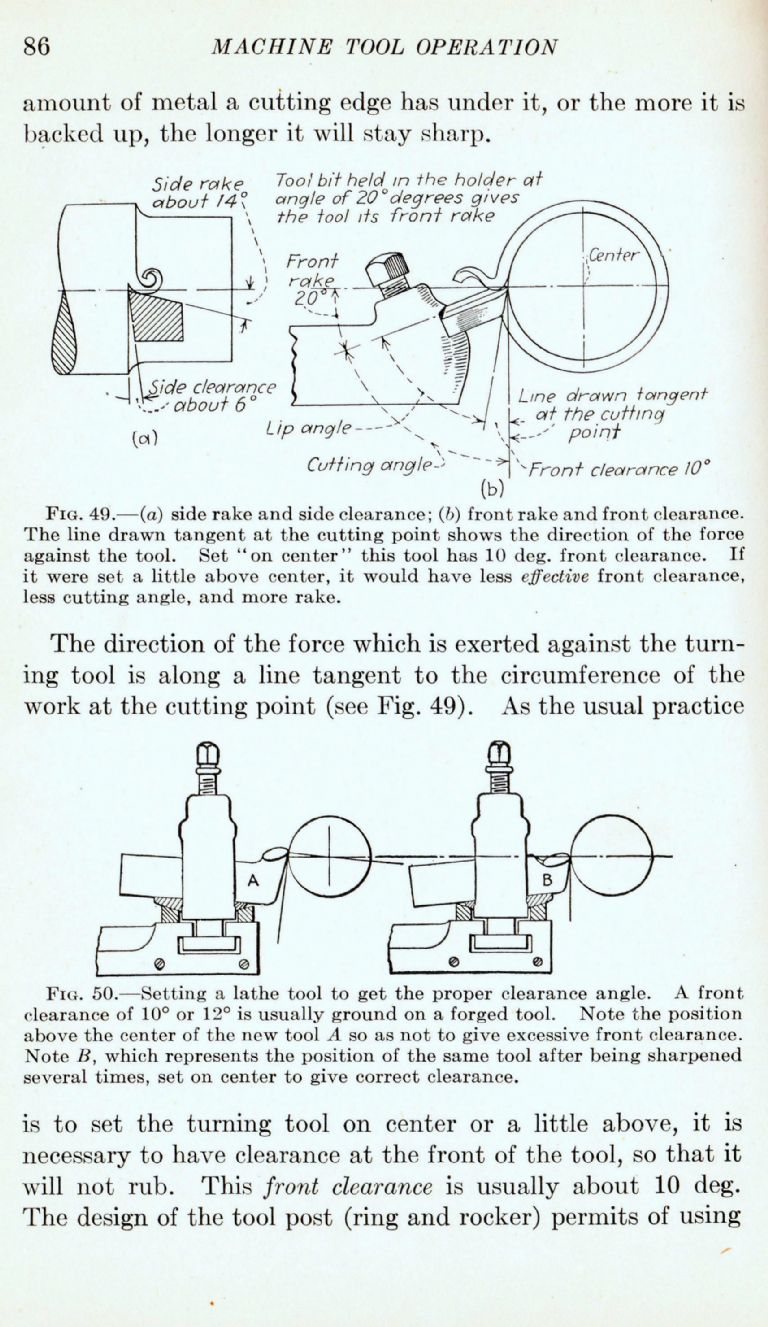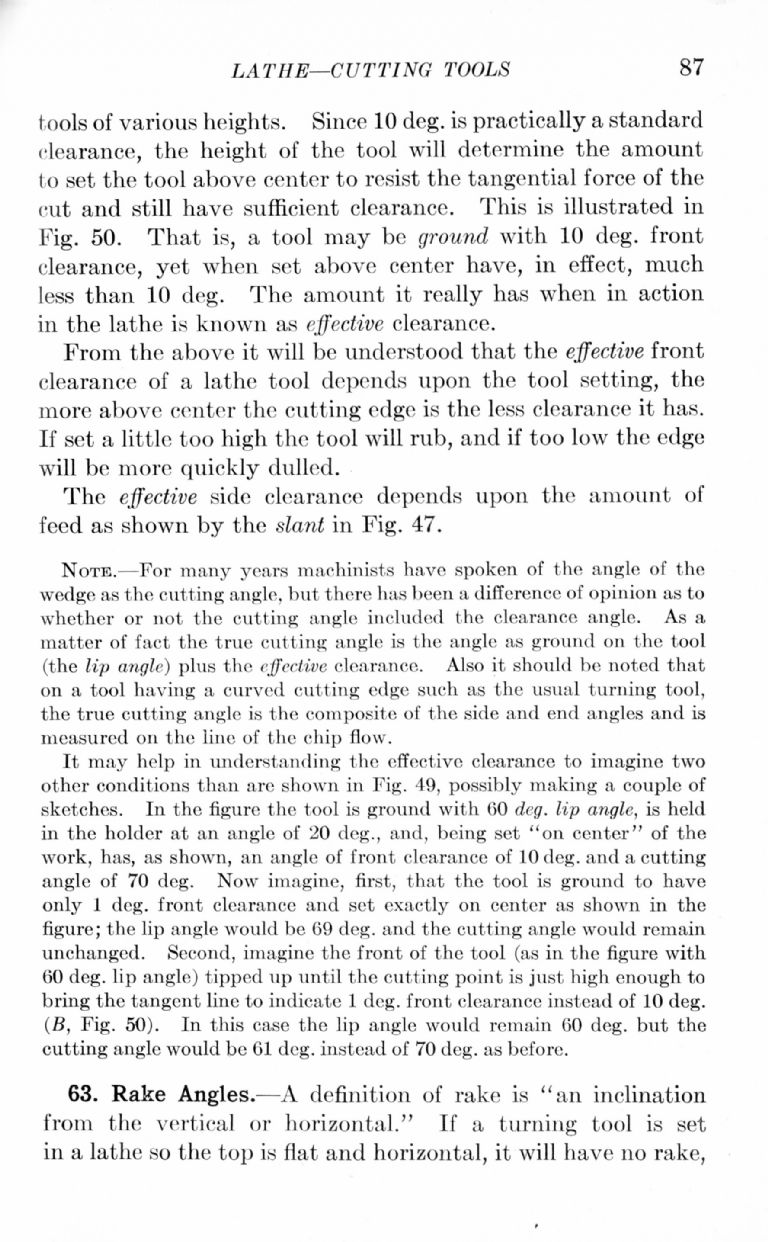Out of curiosity I've had a look along my bookshelf and find that seven relevant books from 1917 to the 1980s don't mention tool height at all. Of the others, Know your Lathe (Denfords, 1953) is in agreement with the South Bend Book and states that "For ordinary straight turning the correct height of the tool cutting edge is about 5 degrees above centre, or 3/64 inch in diameter of the work… Always place the cutting edge of the tool bit exactly on centre… for every type of taper turning and boring, as well as for cutting screw threads and turning brass, copper and similar tenacious metals."
The Practical Metalworker (ed. Bernard E Jones, undated but probably 1920s) shows similar thinking: "… for other operations [than taper tuning and thread cutting], presuming the clearance to be sufficient, advantage is often felt in placing the point some three or four degrees above the centre, as this affords smoother cutting, and sometimes acts beneficially in preventing chatter. [My emphasis.] Clearance is also affected by the work diameter… the chance of rubbing on a small rod being obviously much less than on the periphery of a large circle."
A quick sketch shows that the quoted value of 3/64" per inch of diameter translates to about 5½°, and that 3 to 4 degrees translates to about 1/32". Those degrees are measured round the lathe centre of course, and are not related to the clearance angle of the cutting tool.
Engineering Workshop Practice (ed. A. W. Judge, 1947 edition) says "In setting tools for turning it is important that the points be set exactly on the centre of the work. If the point be set high… the front of the tool will rub below the point. This is more pronounced on small-diameter material*, and in order to make the tool cut, more clearance would require to be ground, thus weakening the point. With the tool point on the centre, the tool functions most efficiently, although it is sometimes found necessary to slightly lower this in order to eliminate chatter when taking a heavy cut. Should the cutting point be lowered too much… it ceases to cut and merely planishes or scrapes the surface of the work." [*This is the exact opposite of The Practical Metalworker, and can be shown to be wrong.]
The Amateur's Lathe (Sparey, 1984 edition) doesn't mention tool height directly except in relation to taper turning and screw-cutting, though he does suggest that the parting-off tool should be set slightly below centre, not above "as is sometimes advised".
The Myford Series 7 Manual (Bradley, 1982) says that "For all ordinary turning and boring, the tool should be set with the cutting edge at exactly centre height".
At the CEGB apprentice workshops in Penarth (now a housing estate) in 1969, we were taught to put the tool at centre height. My conclusion from all this? You pays your expert and you takes your choice!
George
Edited By Georgineer on 21/04/2023 22:17:30
 Martin Connelly.
Martin Connelly.







